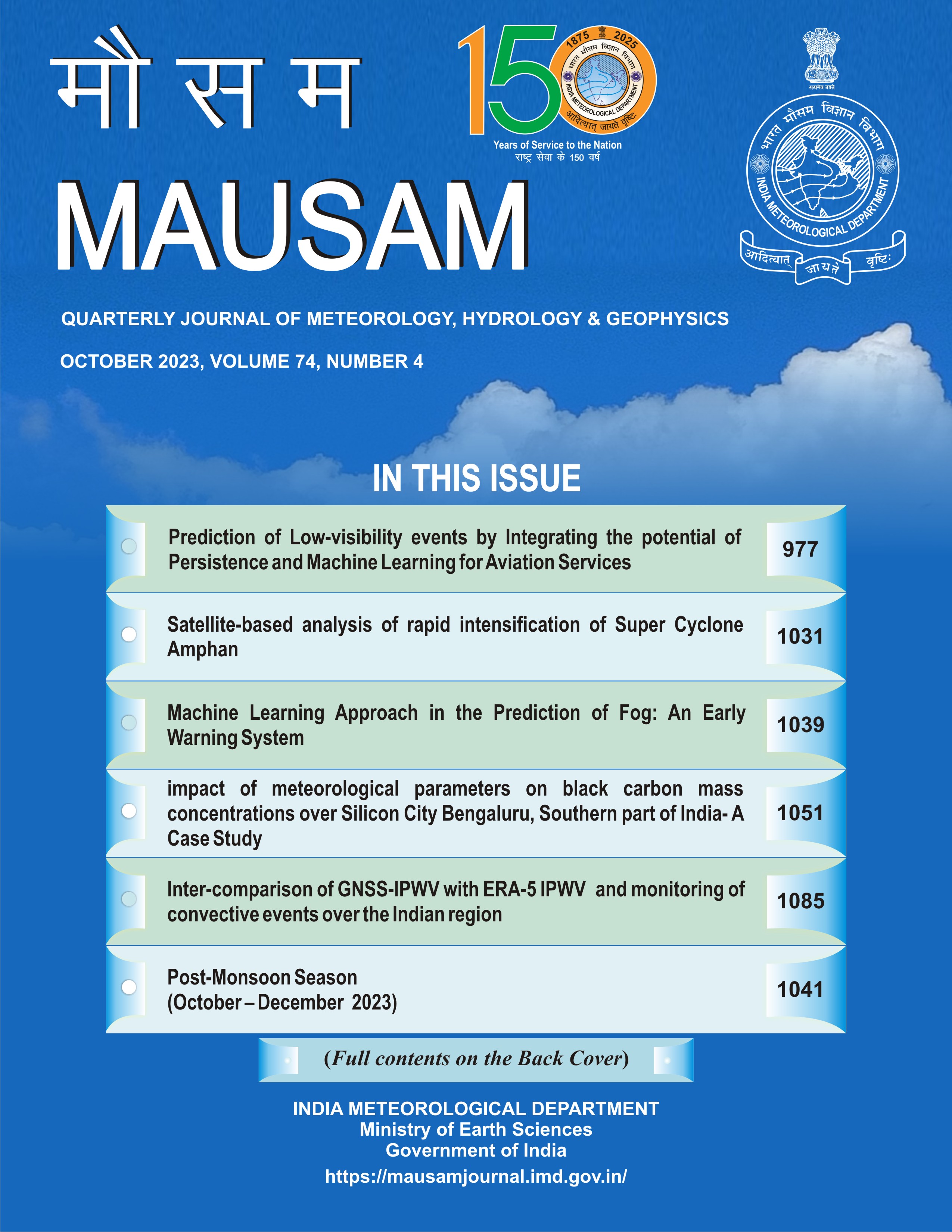Rainfall characteristics under changing climate in Sundergarh district of Odisha
DOI:
https://doi.org/10.54302/mausam.v75i4.3563Abstract
Most pronounced signal of warming world is the increase in intensity and frequency of extreme
events worldwide. Many researchers have reported the nature of these events in coastal district of Odisha, but for
Sundergarh district which comes under North-western Plateau Agro-Climatic Zone, it still needed to be studied. The
present study was conducted with an objective to study rainfall characteristics - rainfall climatology, rainy days, trend -
their deviation and resulting meteorological drought in Sundergarh district of Odisha at block level using 34 years of
daily rainfall data (1988-2022). IMD classification for rainy days was adopted to determine the frequency of rainy days in
different categories. SPI was computed using Climpact to determine the occurrence and severity of meteorological
drought and identify episodes of dry and wet events during the study period for each block. MK test and Sen’s slope
estimator was used for detecting trend in rainfall (annual and seasonal) and rainy days at 95% significance level. Long
term rainfall analysis reveals that the mean annual rainfall of the district is 1290 ± 314 mm, most of which is received
during SW monsoon (86%) followed by post-monsoon (6.2%), pre-monsoon (5.7%) and least during winter (2.1%).
Rainfall received in the months of July and August together accounts for more than 50% of the total. Spatial distribution
of rainfall indicated that mean annual rainfall varies from 1071 mm (Subdega) to 1578 mm (Bonai). Annually, rainfall is
dependable in most of the blocks. However, during pre-monsoon, post-monsoon and winter, CV is very high, so the
rainfall is not dependable. Bulk of annual rainfall received in the district is contributed by rain events of light to moderate
category. Direction and magnitude of the trend of rainfall amount and rainy days varies a lot in different blocks. SPI values calculated for the district as a whole shows that frequency of occurrence of these drought events were: mild (34% of months); moderate (7.6% of months); severe (3.3% of months) and extreme (3.2% of months). The present study provides pertinent information on the rainfall climatology and its trend under climate change over the Sundergarh district of Odisha. Finding of the study suggests that there is an urgent need to raise awareness about the climate resilient society, train personnels about sustainable development approaches and highlight the necessity of water harvesting techniques at community level.
Downloads
Published
How to Cite
Issue
Section
License
Copyright (c) 2024 MAUSAM

This work is licensed under a Creative Commons Attribution-NonCommercial 4.0 International License.
All articles published by MAUSAM are licensed under the Creative Commons Attribution 4.0 International License. This permits anyone.
Anyone is free:
- To Share - to copy, distribute and transmit the work
- To Remix - to adapt the work.
Under the following conditions:
- Share - copy and redistribute the material in any medium or format
- Adapt - remix, transform, and build upon the material for any purpose, even
commercially.



